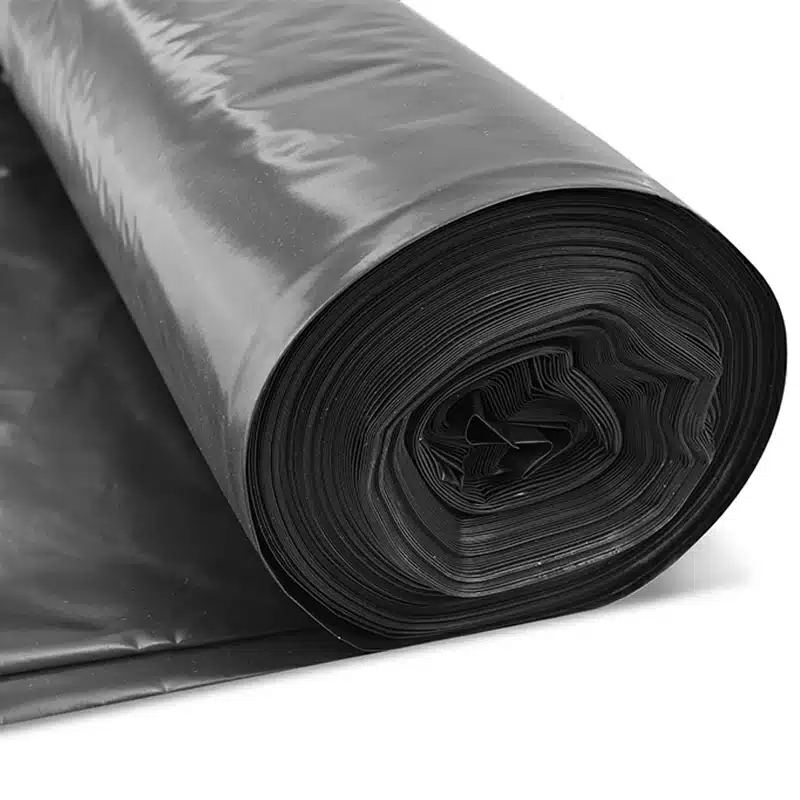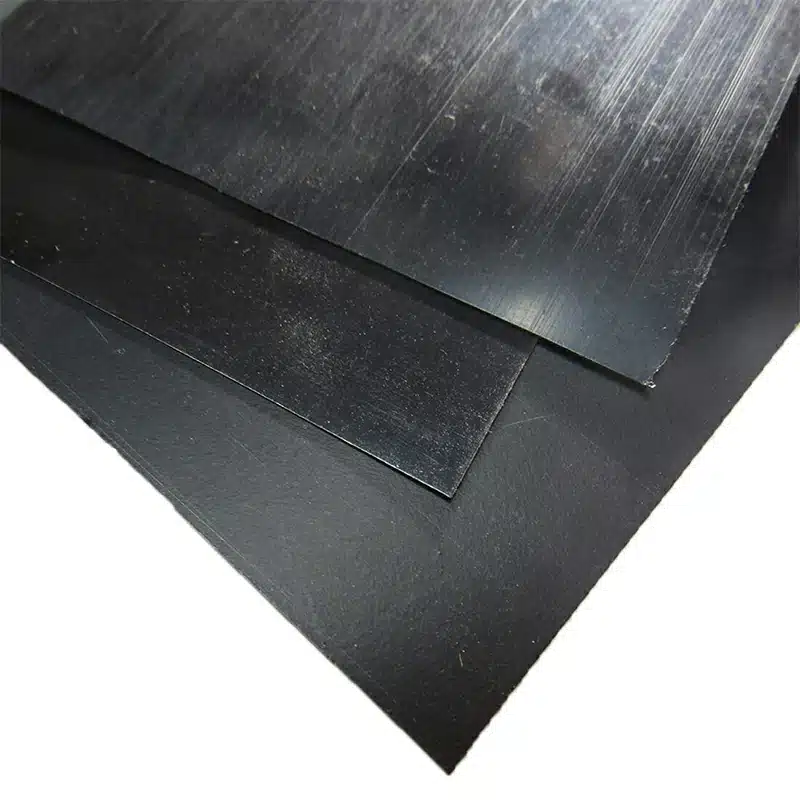+86-159 9860 6917
info@geofantex.com
geofantex@gmail.com
+86-400-8266163-44899
Geomembranes are synthetic membranes widely used in civil engineering, environmental, and geotechnical applications to provide impermeability to liquids and gases. These flexible barriers play a critical role in protecting groundwater, containing waste, and preventing erosion. In this article, we will explore the different types of geomembranes, their key applications, and how they differ from geotextiles, another important category of geosynthetics.
What are the types of geomembranes?
Geomembranes are classified based on the material they are made from. The most common types include:
- High-Density Polyethylene (HDPE): Known for its durability and resistance to chemicals, HDPE is widely used in harsh environments where chemical containment is crucial.
- Low-Density Polyethylene (LDPE): More flexible than HDPE, LDPE is easier to handle and is used in applications where flexibility is required.
- olyvinyl Chloride (PVC): PVC geomembranes are highly flexible and adaptable, often used for temporary containment or where tight spaces are involved.
- Ethylene Propylene Diene Monomer (EPDM): EPDM membranes are known for their elasticity and are commonly used in pond liners and water features due to their UV resistance.
Thermoplastic Sheet Liner: These liners are engineered for versatile applications, combining flexibility with durability, making them an ideal choice for projects requiring both ease of installation and long-lasting performance.

What is the most widely used geomembrane in current use?
The most widely used geomembrane today is High-Density Polyethylene (HDPE). Its HDPE chemical resistance, durability, and ability to withstand extreme environmental conditions make it the top choice for long-term containment applications, such as landfill liners, wastewater treatment ponds, and mining operations. HDPE’s balance of strength and impermeability has made it the standard material in many geotechnical projects.
What is the difference between geomembrane and geotextile?
While both geomembranes and geotextiles are geosynthetic materials, their functions and compositions are quite different. Geomembrane is a plastic film, and geotextile is a fiber cloth geotextile, highlighting their distinct structures and purposes:
- Geomembrane: A geomembrane is an impermeable barrier designed to prevent the passage of fluids and gases. It’s typically used for containment purposes, such as in landfills or reservoirs.
- Geotextile: Geotextiles, on the other hand, are permeable fabrics that allow water to pass through while filtering out soil and other particles. They are often used in drainage, soil stabilization, and erosion control. While geomembranes act as barriers, geotextiles serve as filters or reinforcements.
What geomembranes are used in landfills?
High-density polyethylene (HDPE) geomembranes are the most common choice for landfill applications. They provide the necessary durability and chemical resistance required to contain waste materials and prevent contaminants from leaching into the surrounding soil and groundwater. To meet regulatory standards, these geomembranes must be 60 mils (0.06 inches) thick and must be made of a material (such as high-density polyethylene (HDPE)) that is extremely low in permeability, ensuring reliable containment. HDPE geomembranes are used in both the base and capping systems of landfills to ensure long-term environmental protection.
Geomembranes play an essential role in modern civil and environmental engineering, offering impermeable barriers that prevent fluid migration and protect ecosystems. HDPE is the most widely used type, particularly for landfill and chemical containment applications. Geomembranes differ from geotextiles, which are permeable fabrics used primarily for drainage and filtration. As technology evolves, geomembranes continue to be a critical component in infrastructure projects that require high-performance barrier systems.



Get Free Sample
We’ll respond as soon as possible(within 12 hours)






















